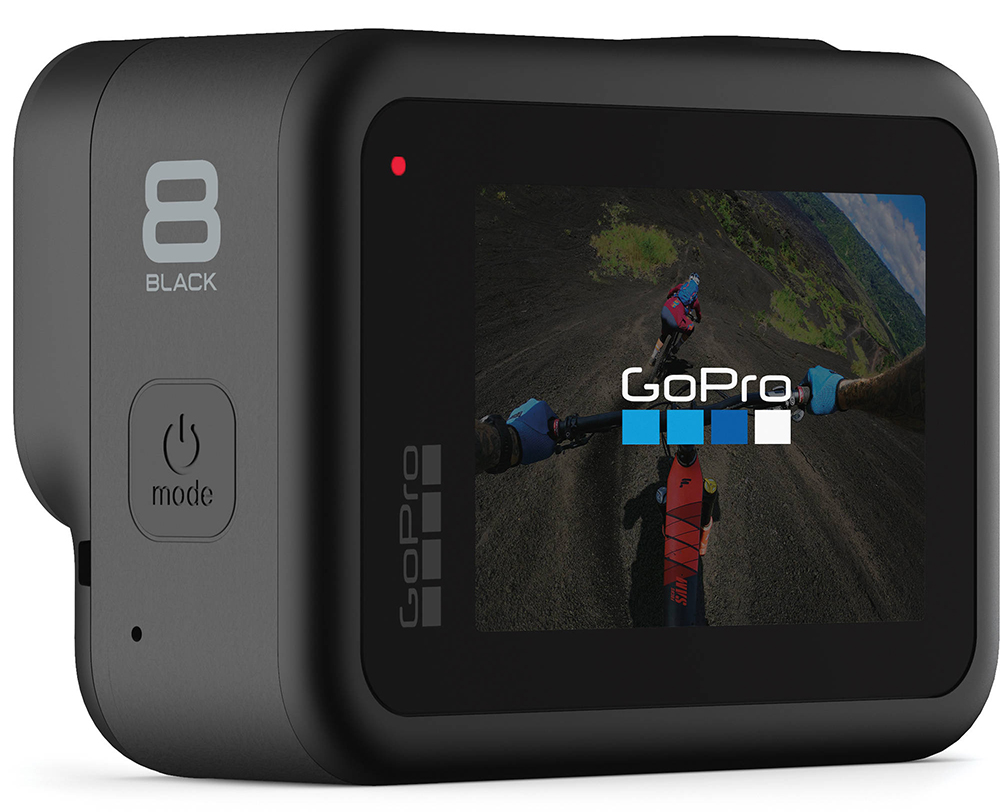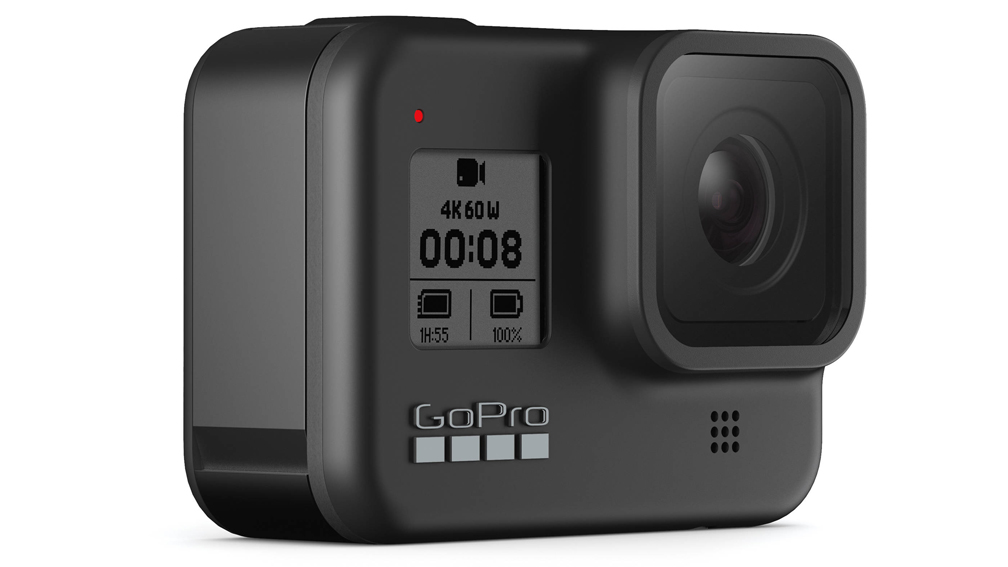Higher Quality Videos and Photos, More Modes, and Smaller Device
Review by Erik Vlietinck
A year ago, GoPro introduced HyperSmooth, a very good smoothing algorithm designed to work as a digital six-axes gimbal. This year, the HERO8 Black tries harder with HyperSmooth 2.0, TimeWarp 2.0, digital lenses, presets, better night photography, and more. The HERO8 has a new form factor that’s about 10% sleeker than the HERO7.
The battery and SD card are now inserted at the side of the device. The big door is removable to connect with the new “Mods,” a new system of accessories that let you add lighting, audio input, and a front-facing screen.
With a better lens as well, GoPro introduces digital lenses, a.k.a. cropping modes. The results are good but, of course, no replacement for a real zoom or exchangeable lens. There are four virtual zoom factors, with the camera automatically setting the optimum cropping area. The HERO8 offers Wide (16–34mm), Linear (19–39mm), SuperView (16mm), and a new Narrow (27mm) angle.

HyperSmooth 2.0 with Boost and TimeWarp 2.0 result in the HERO8 Black having three levels of stabilization: On, High, and Boost. I tried all of them and found that every type of smoothing gives you more natural results than the HERO7. That’s no small feat, as the HERO7’s stabilization was already very, very good.
TimeWarp 2.0 automatically adjusts speed based on motion, scene detection, and lighting. You can even slow down the effect to real time, and then tap to speed it back up. It looks much better than doing this in post.
In Photo mode, the HERO8 Black has been improved as well. Once I turned down the max ISO setting to 400, JPEG photos came out noise-free and with beautiful colors when I left the color setting to GoPro. An equally good result came with the RAW setting. One note in that respect: as I don’t have Adobe Lightroom, I converted the file with Adobe’s DNG Converter. ■






